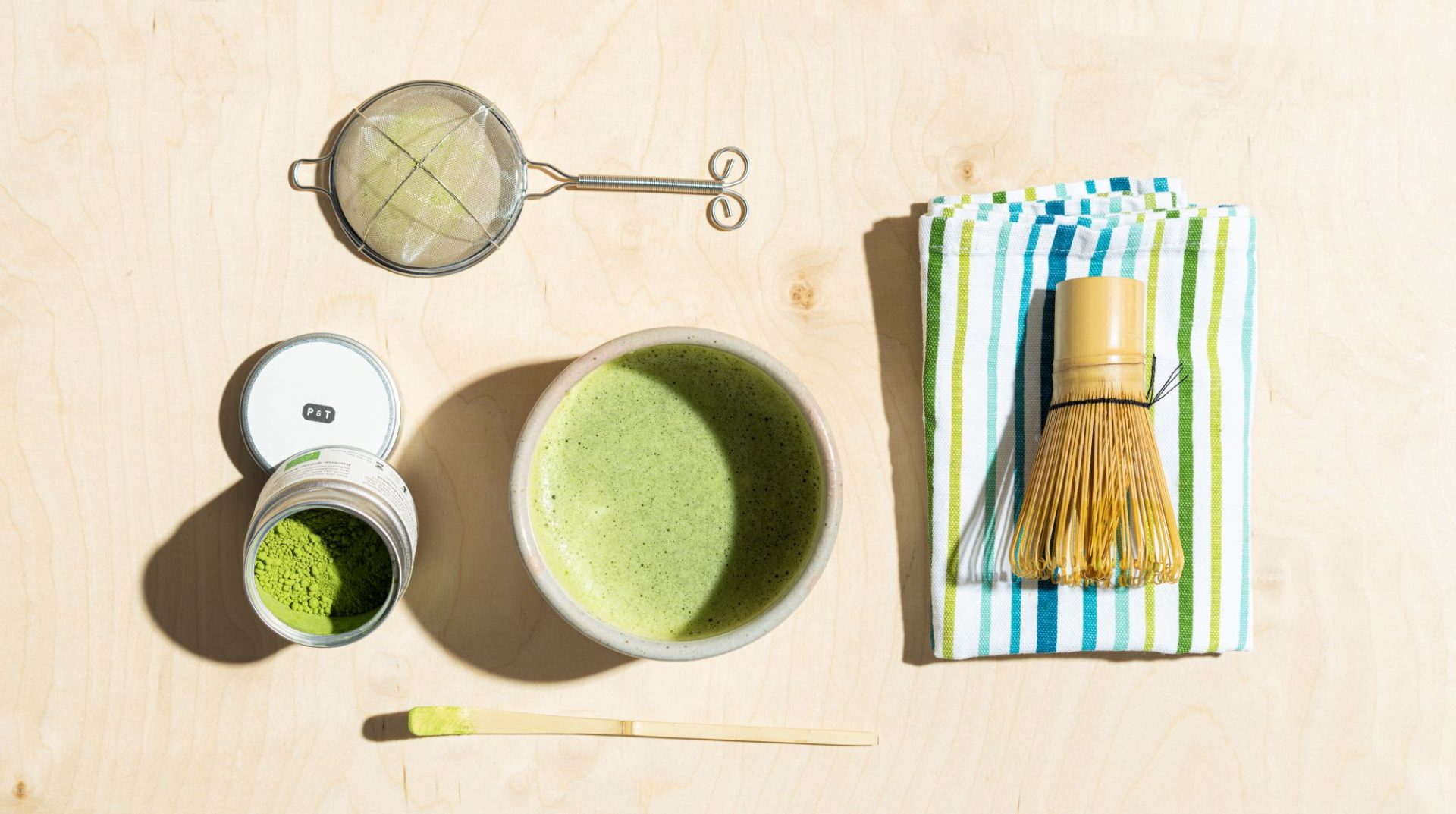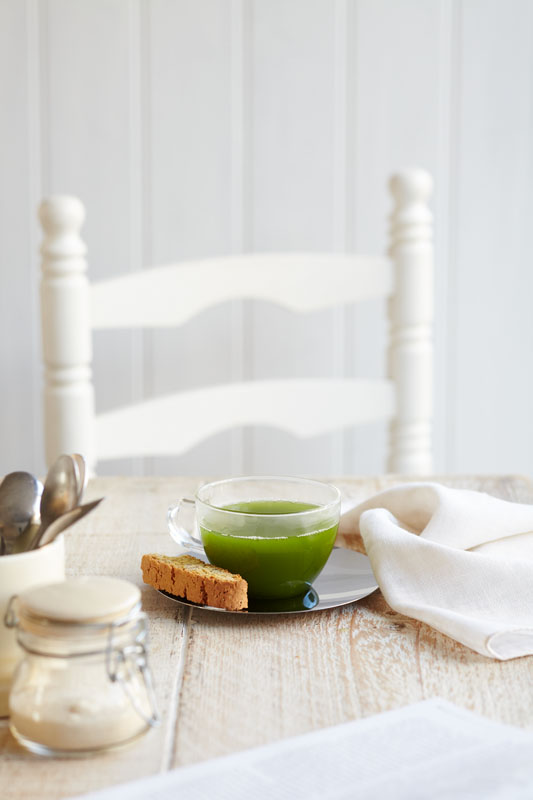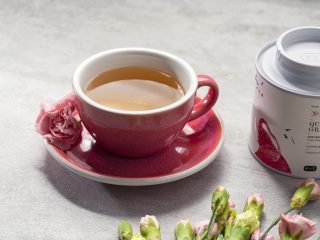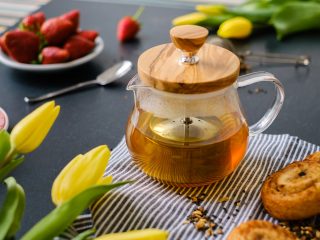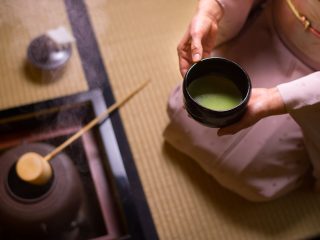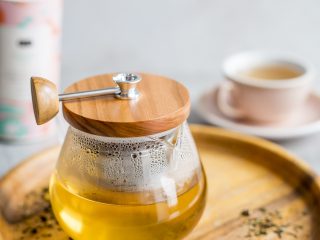Matcha is an éminence grise among Japanese teas and the heart of every tea ceremony. Most of us are familiar with matcha latte, loved by those who spent years looking for a funky alternative to milk-based coffee. However, this tea represents so much more – like a true aristocrat, it stands out in terms of its appearance, processing and meaning in Japanese culture.
What is matcha?
Most common answer to this question – ‘powdered tea leaves’ – is only partially true. Real matcha comes exclusively from Japan, predominantly the regions of Uji and Nishio. Its uniqueness shows early on in the way the plant is cultivated. During winter, the bushes gather nutrients and store them deep in the roots, which ensures their survival in tough, unforgiving conditions. As temperatures rise, they release first buds and young leaves. At this stage the plant is shaded – the amount of sunlight that reaches it is initially limited by 60-70% and subsequently up to 90%. Why? Photosynthesis causes sweet amino acids to convert into bitter catechines – shading restricts this process and allows sweetness to develop in the final product.
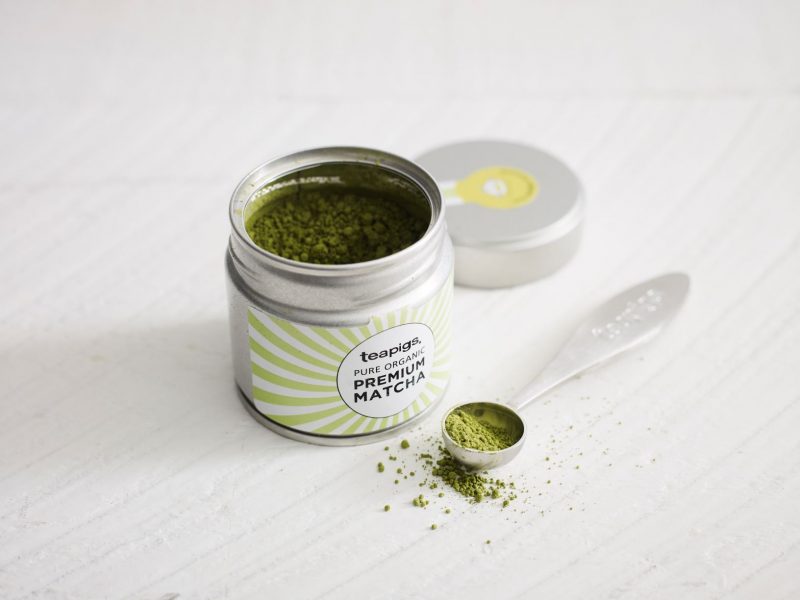
When it is time to harvest, leaves are picked by hand or using machines and immediately transported to the factory, where they undergo steaming, which stops oxidation. Subsequently, leaves are separated from twigs and less desirable parts of the plant, dried and cut. Grinding the tea into fine powder is a final step of a multistage process – until then, it is referred to as ‘tencha’.
How to brew matcha?
Making matcha the traditional way is a ritual in itself – but don’t let that put you off! It is not as complicated as it seems. You only need three tools: chosen (bamboo whisk to froth the tea), chashaku (wooden spoon to measure out the powder) and chawan (tea bowl). All of these are easily replaceable – feel free to use electric milk frother to achieve the desired frothy texture of matcha.
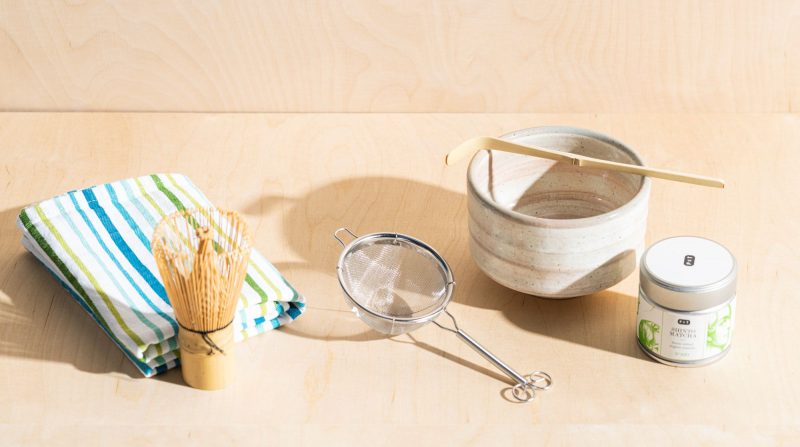
Step by step recipe:
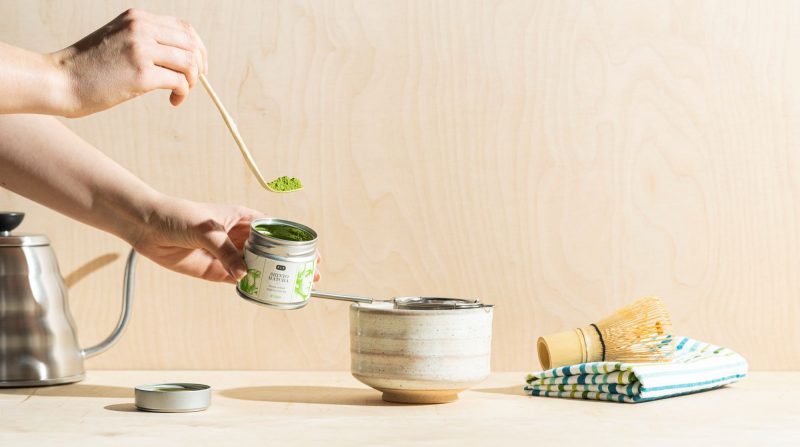
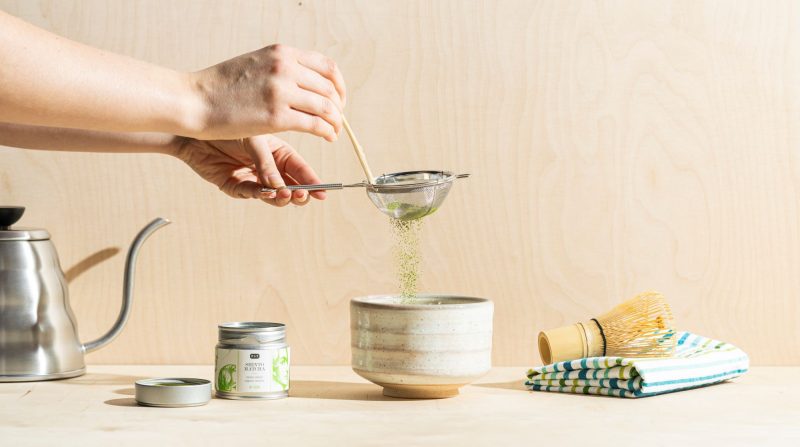
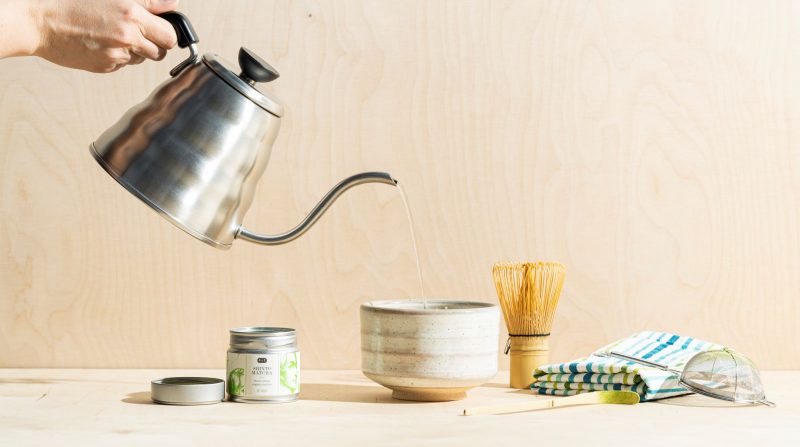
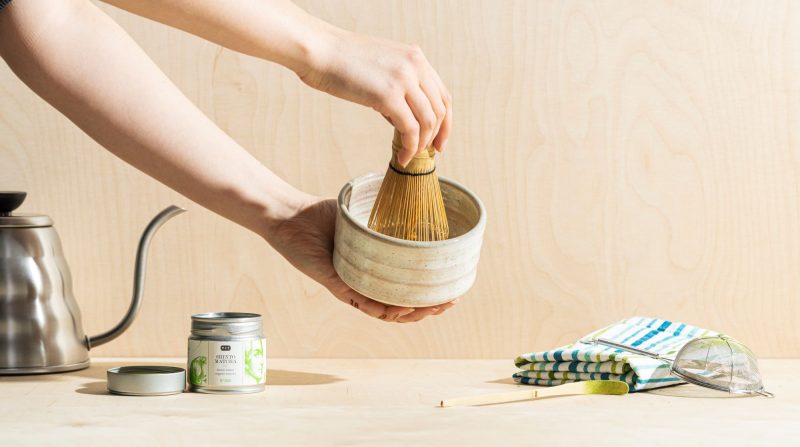
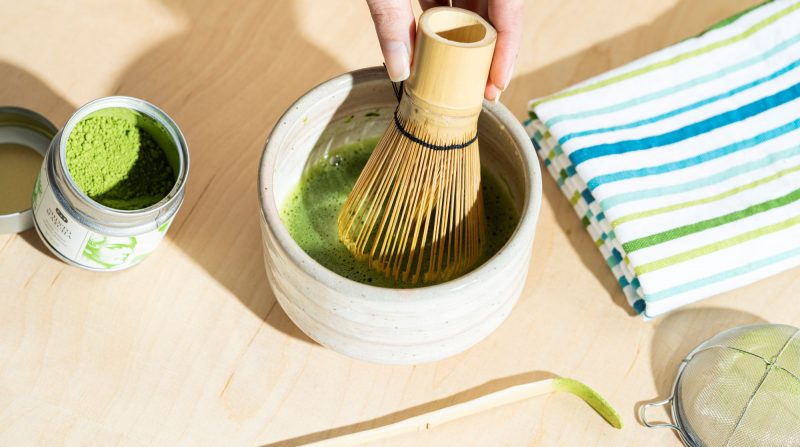
The right temperature oscillates around 80 degrees. Water to powder ratio is, of course, a matter of personal preference. I like my matcha thick and creamy – around 2 grams of tea per 100 ml of water that I vigorously whisk until the texture is nice and frothy. Voila 🙂 making matcha is easier than you think – each cup provides rich sweetness and umami, with mouthwatering vegetal and marine notes.
Health benefits of matcha
The benefits of drinking green tea were recognised as early as thousands of years ago by ancient Chinese medicine and have been confirmed by numerous studies over the last decades.
Matcha tea uses the entire leaf, thus these effects are magnified (this is also why it is recommended that you purchase matcha from a trusted source. Unfortunately in this case low prices almost always indicate low quality). Let’s name a few:
- It lowers bad cholesterol levels! Catechins present in tea leaves naturally protect your heart.
- Matcha contains EGCG, one of the world’s most potent antioxidants. It has anti-inflammatory effects, as well as counteracts the consequences of oxidative stress that is claimed to play a vital role in development of conditions such as cancer, high blood pressure and neurodegenerative diseases)
- L-theanine that is present in matcha helps us relax and alleviate the negative impact stress has on our bodies (and minds)
- Promotes maintaining healthy body weight – according to the American Journal of Clinical Nutrition consuming matcha once a day increases thermogenesis (a process in which the body generates heat production and uses calories to do so)
- Indirectly promotes fertility (thanks to EGCG that prevents DNA damage)
- Antibacterial effects
- It is beneficial for athletes – consuming matcha increases the availability of glycogen and alleviates the effects of training-induced stress
Health benefits of matcha are truly abundant and impressive – however, we would do it a disservice by reducing this unusual tea to its impact on our bodies. Matcha is, above all, a testament to Japanese philosophy and artistry. I highly recommend taking your time and enjoying your own private tea ceremony, where the flavours of matcha will flourish 🙂

